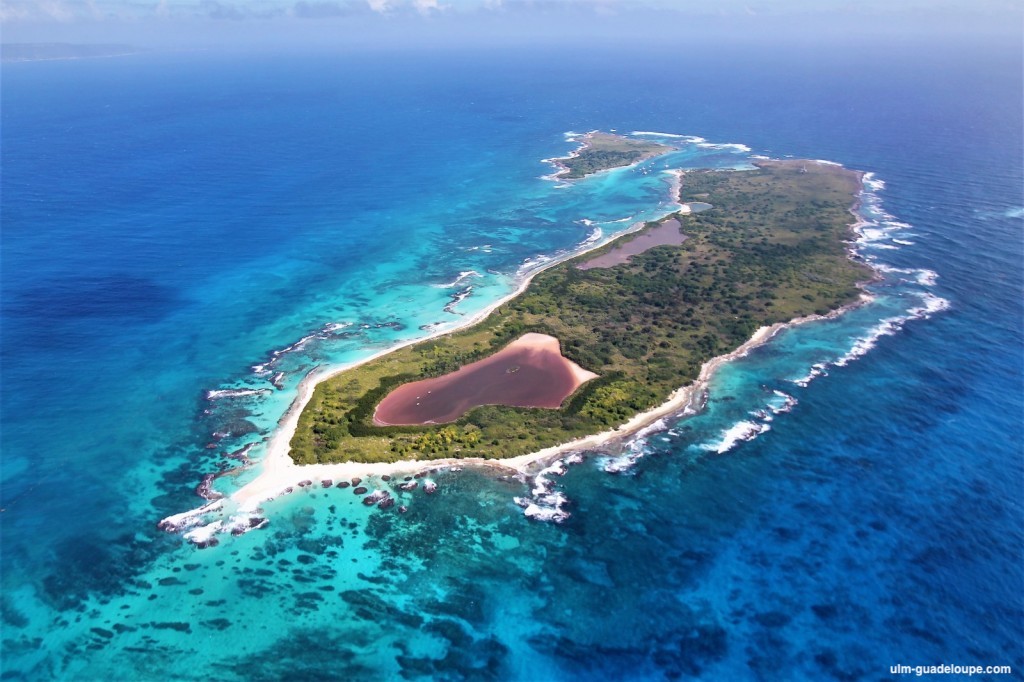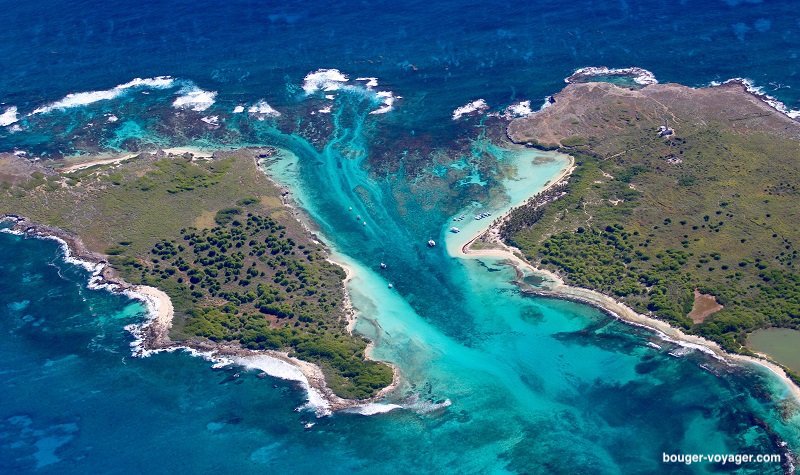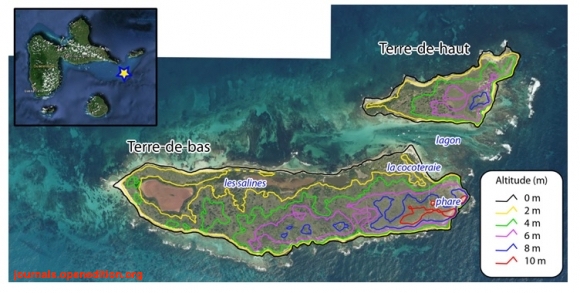
Small land (Petite-Terre)
Description
About ten kilometers from the Pointe des Châteaux, is the Petite Terre archipelago made up of Terre de Haut (31 ha) and Terre de Bas (118 ha). Inhabited between 500 and 600 AD, then used around 1493 to grow cotton for Europe and food products for the local population. Petite Terre is now under the responsibility of La Désirade. Declared a Natural Park* in 1994, hunting and fishing are prohibited. These two deserted islands are separated by a magnificent lagoon* (150 meters wide) of seagrass beds and crystal clear waters surrounded by coral*. Its white sand beaches are the best preserved in the Antilles. The interior of the islands is impenetrable, no road or trail goes through the thorn and cactus undergrowth. There are also 4 salt flats* on its limestone islands* in approximately 15 ha and their biodiversity is very important.
It requires vigilance for its conservation, so the lighthouse to the east of Terre de Bas is inhabited by the Reserve team. Visitors (40,000 per year), when the swell is right, are only allowed up to a certain set number for the day or half day. But, in 2021, the prefecture declared that the carrying capacity of the environment has been exceeded for a few years and aspires to regulate it, restructuring access to the mooring buoys.
Biodiversity
The absence of fresh water causes a very dry climate (rainfall 1100 mm/year), which explains the particular floristic composition of these islands. It is home to two types of vegetation: the coastal system in sandy areas or flood-prone areas where shoreline purslane (Sesuvium portulacastrum), sea lavender (Argusia gnaphalodes) and baycedar (Suriana maritima), and seagrapes (Coccoloba uvifera) grow and, in the emerged system in limestone areas, Monimia rotundifolia, pink manjack (Tabebuia heterophylla) (endemic species to the Lesser Antilles) or even an extremely large population of roughbark lignum-vitae or gaïacwood (Guaiacum officinale), a protected species in danger of extinction.
The bird life is rich here, it is the most important site in Guadeloupe for the wintering of wading birds* (ruddy turnstone (Arenaria interpres), etc.) but also a privileged environment for colonies of least tern (Sternula antillarum), west indian whistling duck (Dendrocygna arborea) and the only nesting site for the American oystercatcher (Haematopus palliatus). Classified as ZICO* (Important Areas for the Conservation of Birds), various mechanisms are used to preserve the habitat of birds, whether they are migratory or not.
In addition to the birdlife, Petite-Terre is home to between 30% and 50% of the world population of the Lesser Antillean iguana (Iguana delicatissima) threatened by the green iguana (Iguana iguana) (invasive species*). The Greater Martinique skink (Mabuya mabouya), the rarest lizard species in Guadeloupe, leopard anole (Anolis marmoratus) and the Mexican free-tailed bat or Brazilian free-tailed bat (Tadarida brasiliensis), the only native mammal* can also be found here. In addition, on the sea side, this reserve has a population of about ten sea turtles (hawksbill sea turtle, Eretmochelys imbricata, and green sea turtle, Chelonia mydas) that have come to lay their eggs. It is also home to juvenile lemon sharks (Negaprion brevirostris).
Ecotourism potential
bviously, the Petite-Terre nature reserve has a very rich natural heritage to offer. Its discovery is only possible through the mooring of motor boats or catamarans that take place throughout the year, respecting this place without leaving a trace is what it needs to survive.

Source: bouger-voyager.com

Source: ulm-guadeloupe.com

Informations
-
Types de milieux
Archipelo -
Location
Guadeloupe (Désirade)
